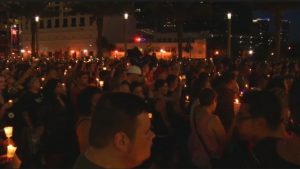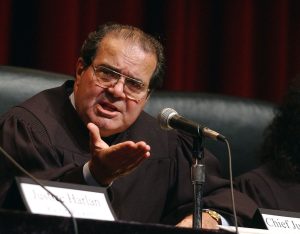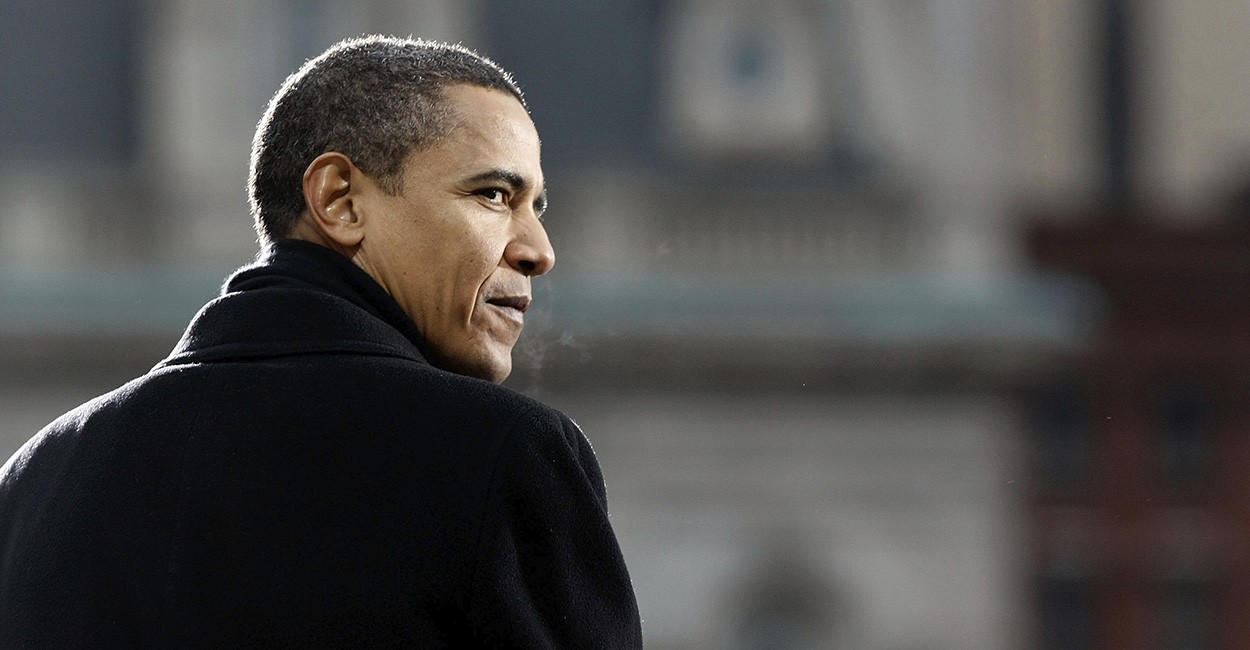By Rob Oldham
We woke up to a nightmare Sunday morning as news broke that the worst terrorist attack on American soil since 9/11 and deadliest mass shooting in U.S. history occurred at Pulse, a gay nightclub in Orlando, Florida. 29-year old ISIL sympathizer Omar Mateen killed 49 people and wounded over 50 more with an AR-15 assault rifle. The attack defies a simple categorization. It cuts across a range of issues including radical homegrown terrorism, lax gun laws in the United States, and prejudice against the LGBT community (some reports are indicating that Mateen may have been homosexual himself and a past patron of Pulse).

Despite the complexity of the Orlando massacre, Democrats and Republicans are staking out familiar talking points with Democrats calling for stricter gun regulations and Republicans decrying radical Islamic terrorism. Similar to the aftermath of the December 2015 San Bernardino shooting, when two ISIL-pledged extremists killed 14 Americans with legally purchased weapons, Democrats are pointing at what seems to be an obvious flaw in gun laws: people suspected of terrorism, particularly those on the no-fly list, can legally obtain weapons.
Just days before the attack, President Obama derided congressional Republicans and the National Rifle Association for not adopting a “common sense reform” and preventing persons on the no-fly list from purchasing a weapon. In the aftermath of Orlando, presumptive Democratic nominee Hillary Clinton also suggested closing the no-fly loophole and expanding the Terrorist Watchlist. On Wednesday, Senate Democrats led a talking filibuster for 14 hours on the Senate floor, advocating for stricter gun laws, particularly a “no fly, no buy” law. Senate Republicans previously voted down a version of “no fly, no buy” the day after the San Bernardino shootings. Their reason? It’s unconstitutional.

Here is the 2nd Amendment, ambiguous as always.
A well regulated militia, being necessary to the security of a free state, the right of the people to keep and bear arms, shall not be infringed.
For years, legal scholars have tried to discern the nuances and caveats of this single sentence that has fueled a multibillion dollar industry, a grassroots movement with millions of followers, and a gun culture that causes more gun deaths per capita than any other country on Earth. Does it only give gun rights to militias? What about bazookas and assault weapons? How can semiautomatic rifles in 2016 possibly be compared to the single shot muskets of the 18th century?
For all the controversy it generates, there is remarkably little case law from the Supreme Court about the 2nd Amendment and, thus, little room to interpret what it actually means. United States v. Miller (1939) implied that Congress can regulate any weapon not related to a “well regulated militia,” which in that case was a short-barreled shotgun. The Court did not hear another meaningful case until 2008 when it decided United States v. Heller. Writing for the majority, the late Justice Scalia found that there is an individual right to gun ownership that extends beyond membership in a militia. He also stated that guns are not immune from regulation, and that reasonable measures such as prohibiting “possession of firearms by felons and the mentally ill” would likely be constitutional.
“No fly, no buy” seems to conform to Scalia’s opinion. Preventing suspected terrorists from obtaining weapons is the epitome of a reasonable regulation. So why do Republicans call foul? It is the mechanism, not the substance, of the regulation that they oppose. In its current form, “no fly, no buy” allows the executive branch almost total discretion to limit what the Court has held to be a constitutional right. Current rules for the Terrorist Watchlist allow the Attorney General “to designate individuals as representatives of terror organizations without any evidence they are actually connected to such organizations.” Moreover, “It gives a single White House official the unilateral authority to place entire ‘categories’ of people the government is tracking onto the No Fly and selectee lists.” (To be clear, the original bill proposed by Senate Democrats in December allowed the federal government to stop anyone on the Terrorist Watchlist, not just those on the no-fly list, from obtaining a weapon. There are around 800,000 people on this list, including 6,400 American citizens who are also on the no-fly list).
Democrats argue that the process is accountable. The bill proposed last December allowed persons placed on the no-fly list to challenge their status. However, the challenge provision does little to remedy the injury. Over 6,000 Americans who are currently on the no-fly list would be burdened in exercising what the country’s highest court has held to be a sacred individual right. They would have to prove that they should have their rights, rather than the government proving that they should not. Although the Department of Justice will now notify people who are placed on the no-fly list, they are under no obligation to give their reasoning. As former GPR writer Robert Galerstein put it in a blog post last December, “The privacy and fluidity of the [no-fly] list create[s] a scary potential where any citizen deemed a terrorist threat could no longer purchase guns even though they had not committed any crimes.”
Because there have been few cases about gun rights, it is unknown how the Court would specifically consider a “no fly, no buy” law. Most rights have some sort of balancing test. For highly protected rights such as freedom of speech, the Court applies a strict scrutiny test that makes the government prove both that there is a compelling interest to abridge that right and that it is accomplishing its goals in the least burdensome way possible. Less protected rights (usually those not in the Bill of Rights, such as the freedom to engage in commerce) are subject to a rational basis test, which only requires the government to prove that their law could be rationally construed as advancing an important interest.

Heller does not articulate a standard for the 2nd Amendment, but it does make clear that gun rights should at least be on a higher plane than the rational basis test. The majority also rejects a suggestion from Justice Breyer’s dissent that the government apply an “interest-balancing test” to weigh the rights of Americans to own guns against the government’s compelling interest in preventing violence. Justice Scalia writes, “We know of no other enumerated constitutional right whose core protection has been subjected to a freestanding ‘interest-balancing’ approach.”
So, assuming that gun rights fall somewhere closer to speech than commerce on the spectrum of protected rights, it is unlikely that “no fly, no buy” meets constitutional muster. The current process is overly broad and, while it might prevent some terrorists from obtaining weapons, it tramples on the rights of a large number of Americans to accomplish that goal. Under the Heller standard, the Court would probably require Congress to develop a more narrowly tailored law that limits the executive’s ability to curb constitutional rights unilaterally and provides for a more robust and transparent process when he or she does need to act. The process would likely need to make the no-fly list more transparent, create in-depth notification requirements, and put more of a burden on the government to prove why an American’s rights should be violated, rather than forcing an individual to prove why they should not.
An oft quoted phrase in constitutional law is “the Constitution is not a suicide pact.” First used by Justice Robert Jackson in 1949, it expresses the idea that the Constitution should not be seen as an impediment when the government needs to make important decisions to protect its people. Applied in this case, the 2nd Amendment should not allow terrorists to purchase dangerous weapons and carry out attacks. But we should also keep in mind that neither Omar Mateen nor the San Bernardino shooters were on the no-fly list. Moreover, gun attacks by terrorists represent just a small fraction of the total gun deaths in the United States, and it is unclear whether any of these attacks have been committed by persons on the no-fly list. The government should at least be able to prove that there is an empirical reason when it severely limits the rights of thousands of Americans, most of whom are unlikely to ever be involved in a terrorist attack. The “common sense” claimed by President Obama, Secretary Clinton, and Senate Democrats is not good enough.


